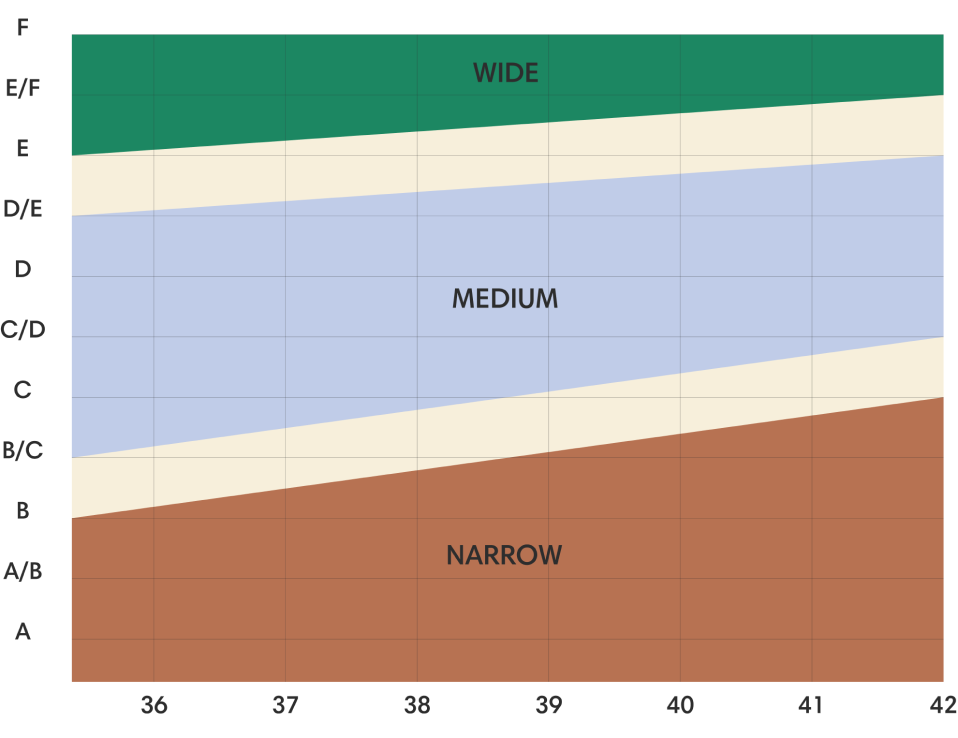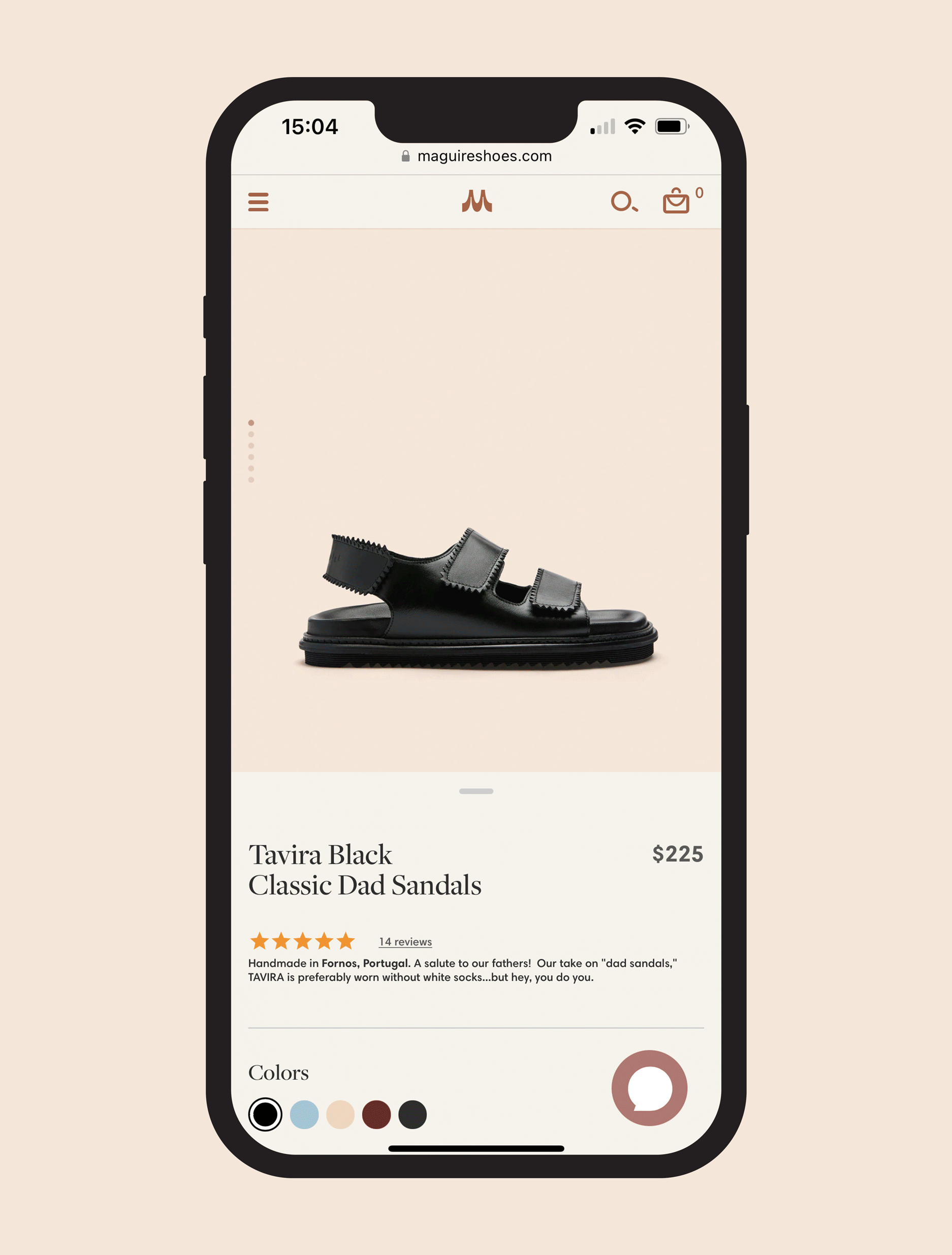Women's shoe size guide
Ordering from home? No problem. Follow this guide to know which size to order.
Step 1: Measure your feet
1. Print the Shoe Sizer on a standard sheet of paper.
2. Follow the instructions on the Shoe Sizer.
3. Measure your length.
4. Measure your width.
5. Cut out the ruler to measure the circumference of your ankle (if needed).
Step 2: Find your size
On the Shoe sizer, note the zones where your two longest toes land. Your recommended length will be the mid-point between these zones.
If in doubt or between two sizes: Round down for sandals, mules and low and high heels; and round up for boots and sneakers.
Measure your feet with or without socks according to the model you are shopping for and how you intend to wear it.
Don’t forget to double check whether it compares to your usual size.
Step 3: Find your foot width
On the Shoe sizer, note the zone that falls under the bend of your pinky toe. If unsure, select the zone above.
Then refer to the chart to determine your foot width.
Why is this important? Your foot width might influence our size recommendations from one style to another.
Measure it. You might be surprised by the result! ;)

Step 4: Consult our Fit notes
All feet have peculiarities that will impact your size choice depending on the shoe.
We added "Fit notes" on each product page to help you see if the shoes fit your particularities and what impact it could have on your size choice.
Foot width: Occasionally you might have to size-down if you have a narrow foot, and size-up if you have a wide foot. Some styles are particularly good for one or the other, and we’ll always let you know!
Arch width: High arch or flat foot, this quality can affect the fit of different types of sandals, mules, and boots. Some styles are particularly good for one type of arch, and we’ll always let you know!
Ankle: We indicate the circumference as well as the height of boot and shoe ankles whenever applicable. Ankle dimensions are shown for size 37. Don’t forget that the ankle circumference and height are proportional to the shoe size.
Orthopaedics: When the insoles can be removed from the shoes!

Step 1: Measure your feet
1. Place a ruler perpendicular to a wall.
2. Place your foot with your heel against the wall.
3. Measure your length: The midpoint between your two longest toes.
4. Measure your width: From the ball of your foot to the base of your pinky toe.
5. If needed, cut a strip of paper to mark the circumference of your ankle.
6. Measure the strip of paper against the ruler.
Step 2: Find your size
Use your length measurement to identify your size in EUR size, and double check whether it compares to your usual size.
Measure your feet with or without socks according to the model you are shopping for and how you intend to wear it.
If in doubt or between two sizes: Round down for sandals, mules and low and high heels; and round up for boots and sneakers.
Step 3: Find your foot width
Use your width measurement to identify your width zone. If unsure, select the zone above:
A: 7.5-8 cm
B: 8-8.5 cm
C: 8.5-9 cm
D: 9-9.5 cm
E: 9.5-10 cm
F: 10-10.5 cm
Then refer to the chart to determine your foot width.
Why is this important?
Your foot width might influence our size recommendations from one style to another.
Measure it. You might be surprised by the result! ;)

Step 4: Consult our Fit notes
All feet have peculiarities that will impact your size choice depending on the shoe.
We added "Fit notes" on each product page to help you see if the shoes fit your particularities and what impact it could have on your size choice.
Foot width: Occasionally you might have to size-down if you have a narrow foot, and size-up if you have a wide foot. Some styles are particularly good for one or the other, and we’ll always let you know!
Arch width: High arch or flat foot, this quality can affect the fit of different types of sandals, mules, and boots. Some styles are particularly good for one type of arch, and we’ll always let you know!
Ankle: We indicate the circumference as well as the height of boot and shoe ankles whenever applicable. Ankle dimensions are shown for size 37. Don’t forget that the ankle circumference and height are proportional to the shoe size.
Orthopaedics: When the insoles can be removed from the shoes!

Tips & Tricks
- 1. Footwear fit is not an exact science. Be sure to also consult the product page for tips and advice, as well as your own experience and needs.
- 2. Measure your feet with or without socks according to the model you are shopping for, and how you intend to wear it.
- 3. In case of doubt or between two sizes, round down for sandals, mules and low and high heels, and round up for boots and sneakers.
- 4. Keep in mind that your feet can vary according to the temperature, alcohol consumption, and time of day.
Come try a pair
at one of our stores
Still unsure?
Try it on at home.
We offer free 30 day returns.
Questions? We're here to help!
hello@maguireshoes.com or 514 809-5059.


